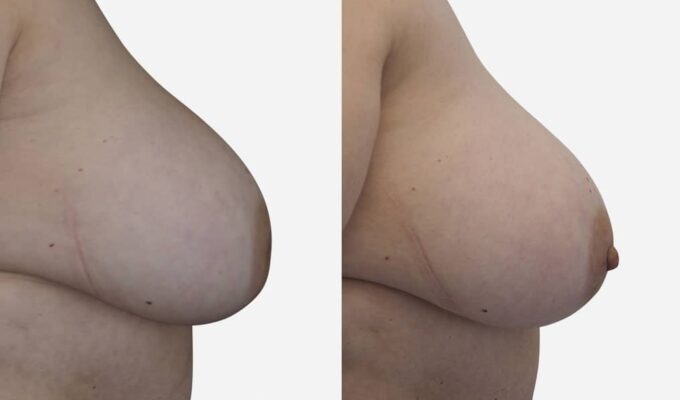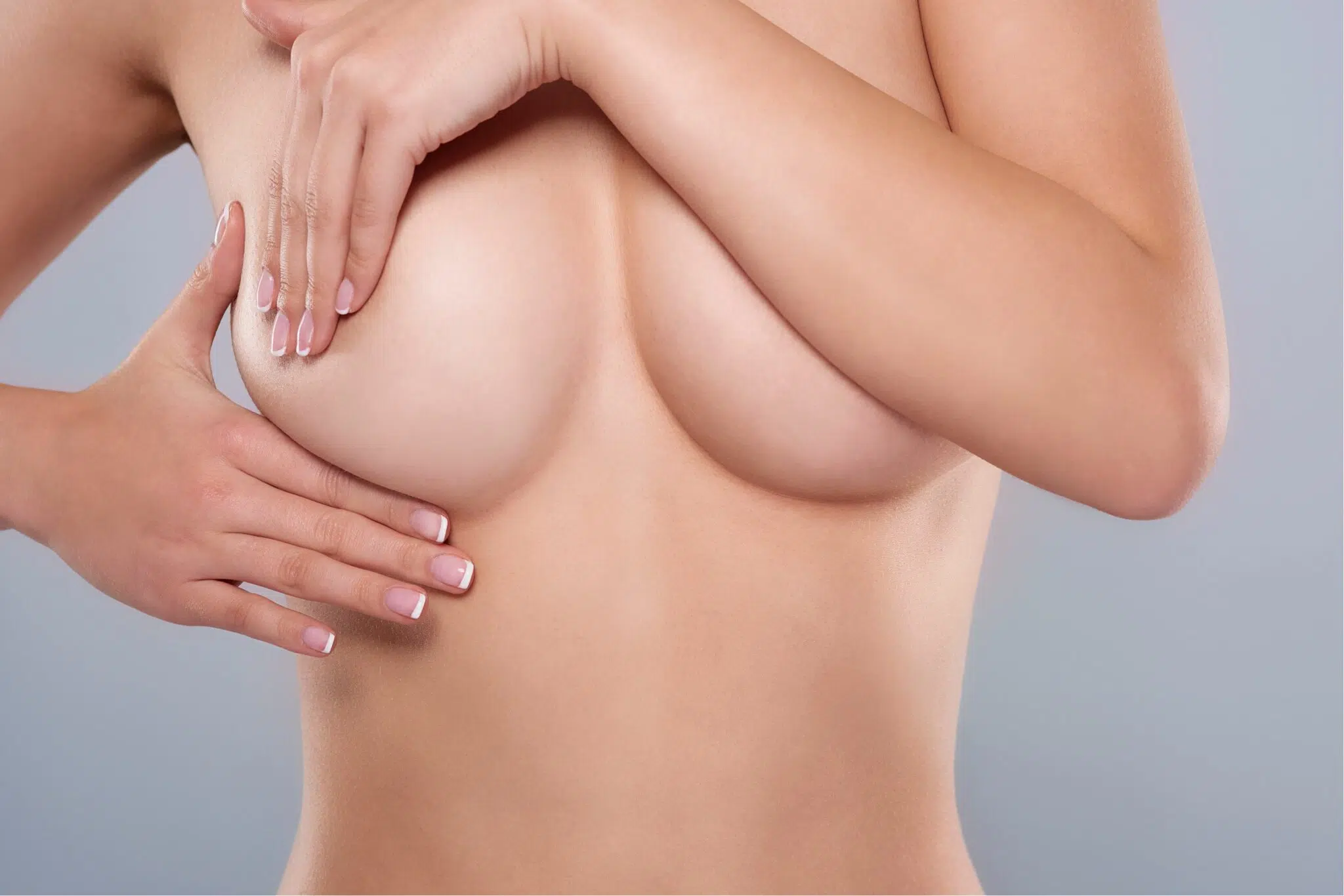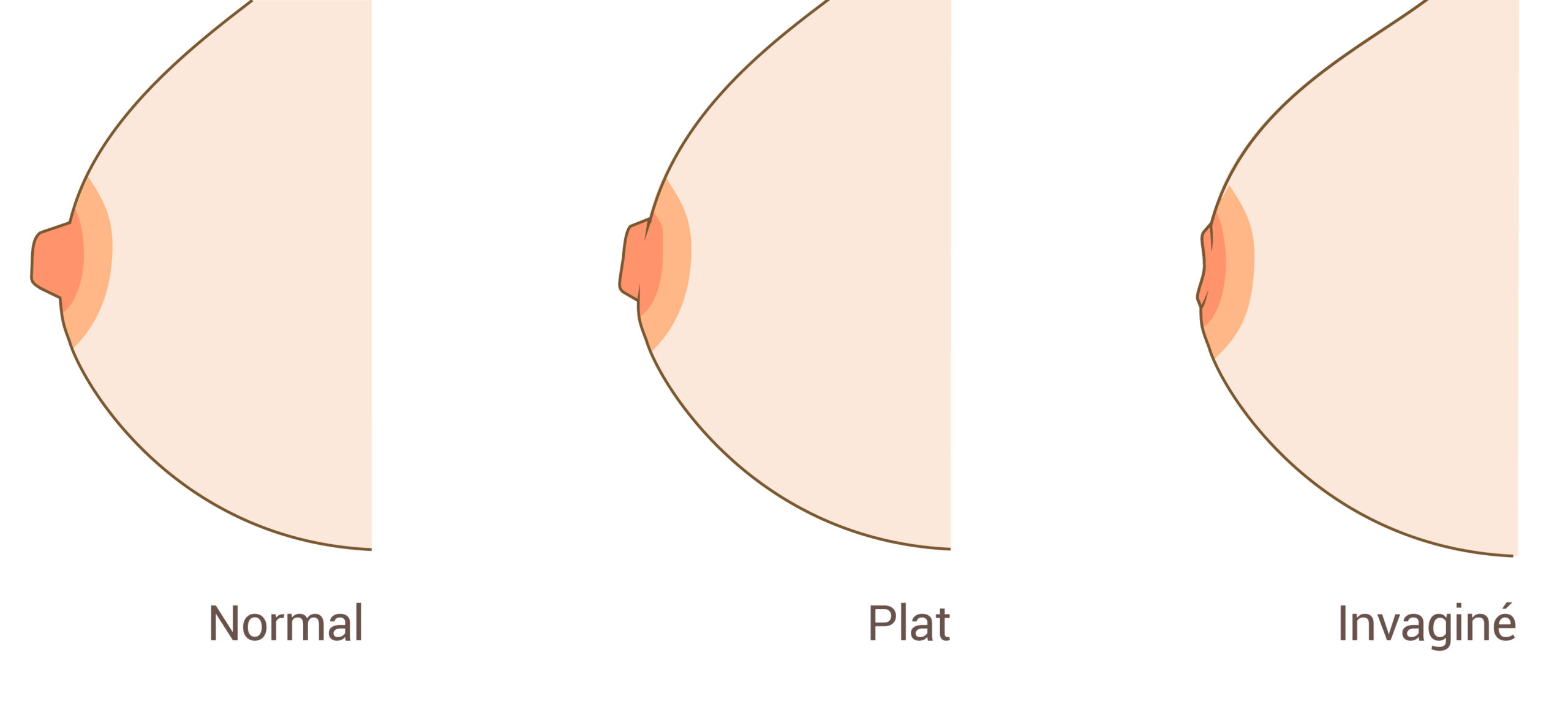
Correction of inverted nipples
A simple surgery under local anesthesia to permanently correct the inverted nipple.
Inverted nipples are very common. They can occur unilaterally or bilaterally and may cause self-consciousness or breastfeeding difficulties. Both men and women can have inverted nipples, and simple cosmetic nipple surgery techniques can restore a natural appearance.

Umbilical nipples (also called invaginated or inverted nipples) are very common (affecting one in ten women). This deformity is due to a retraction of the milk ducts, which pulls the nipple inward. These ducts are responsible for milk flow during breastfeeding.
For the vast majority of individuals, this condition is congenital, present from birth or developing during adolescence as the mammary gland matures.
In very rare cases, inverted nipples can be a sign of breast cancer. It is important to undergo examination to rule out any secondary causes. Inverted nipples can hinder proper breastfeeding.
While breastfeeding may pose challenges for about 10% of women with grade 3 inverted nipples, it remains a viable option in most cases. Indeed, during the first two grades, the nipple can be everted through the baby’s suction.
However, grade 3 presents more challenges for breastfeeding. Various methods, including manual nipple stimulation (through pressure or cold), can be explored. If these techniques are not optimal and the baby cannot latch properly even with a good breast hold, a mechanical nipple extractor may be used.
It is crucial to emphasize that, despite the available options, surgery for inverted nipples is generally not recommended to facilitate breastfeeding, as it primarily aims for aesthetic improvement.
There are different levels of inverted nipples, classified based on the severity of symptoms. Inverted nipples are categorized as follows:
Grade 1: The nipple is inverted at rest but can easily be everted with stimulation such as pressure around the nipple, exposure to cold, or during pregnancy.
Grade 2: The nipple is inverted at rest, and manual eversion is more difficult; it retracts immediately upon release.
Grade 3: The nipple is inverted all the time and cannot be everted.
Different grades of inverted nipples can be observed between both breasts of the same person.

The procedure is simple, performed under local anesthesia. An incision is made on the sides of the nipple, and the milk ducts are cut to release the inverted nipple outward.
Subsequently, two small skin flaps are interposed under the nipple to prevent recurrence, ensuring a stable long-term result. A dissolvable suture is then placed at the base of the nipple to secure and maintain its protrusion.
Correction of inverted nipples is performed under local anesthesia in the operating room. The patient enters the clinic in the morning and leaves the same day (outpatient surgery).
Prior to surgery, a mammogram or breast ultrasound is necessary. The procedure typically lasts about 15 minutes per side.
Recovery from nipple surgery is straightforward. Pain is moderate and well managed with standard painkillers. Resumption of activities is possible the day after surgery. There are no special post-operative care requirements. It is advisable not to wear a bra for one week following the procedure.
Correction of inverted nipples can be achieved through two techniques, each with varying scar outcomes.
The first technique limits future breastfeeding but results in a smaller scar. A 2-millimeter incision is made to sever all retracted milk ducts that hold the nipple inward.
The second technique preserves future breastfeeding potential but results in a larger scar. The incision is made vertically along the entire height of the nipple, leading to a wider scar.
However, regardless of the technique used, scars typically fade within a year.
The cost associated with umbilicated nipples surgery, also known as surgery for inverted nipples, is a major concern for many patients. Fortunately, this procedure is covered by social security, significantly reducing the financial burden.
However, the exact out-of-pocket expenses vary depending on the specifics of your insurance policy. It is advisable to contact your insurance provider to obtain a precise estimate of the remaining costs and adequately prepare for the procedure.
If the deformity is deemed troublesome by your physician, then surgery may be covered. However, only hospitalization costs are covered. Patients are responsible for the surgeon’s fees. Some insurance policies may provide additional coverage depending on the policy.
Most cases of nipple inversion are genetic and present from birth. However, nipples can invert later in life, especially with age or due to breast cancer. It’s worth noting that nipple inversion can affect both men and women.
The procedure is performed under general anesthesia, causing no pain during the operation. Afterwards, slight discomfort may be experienced, easily managed with over-the-counter pain relievers like paracetamol.
Common side effects include bruising and mild swelling around the operated nipple. These discomforts typically resolve within a few days.

DOCTOR BENJAMIN SARFATI
Specialist in breast surgery and intimate surgery
Make an appointment
Make an appointment in person or by teleconsultation :